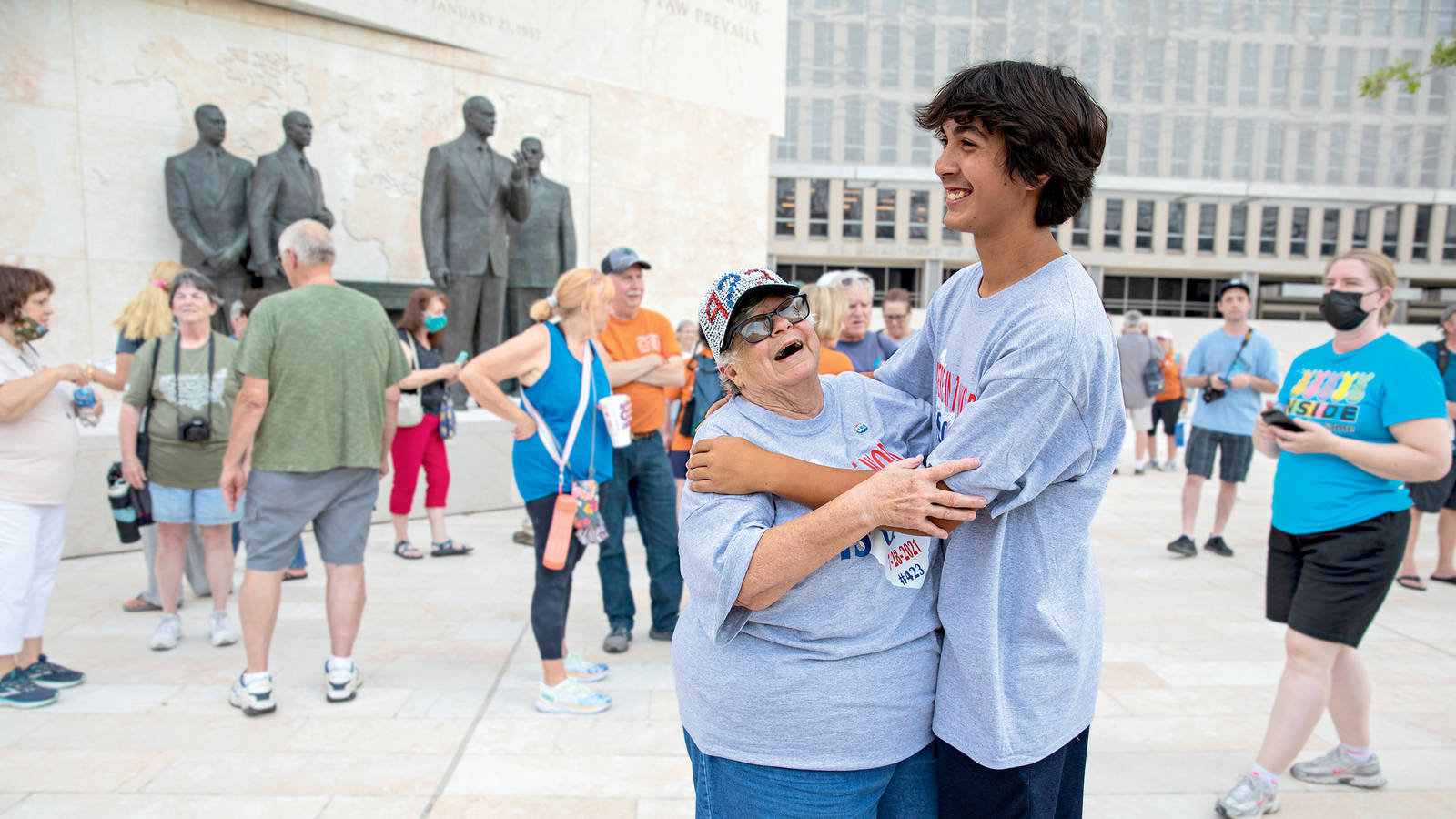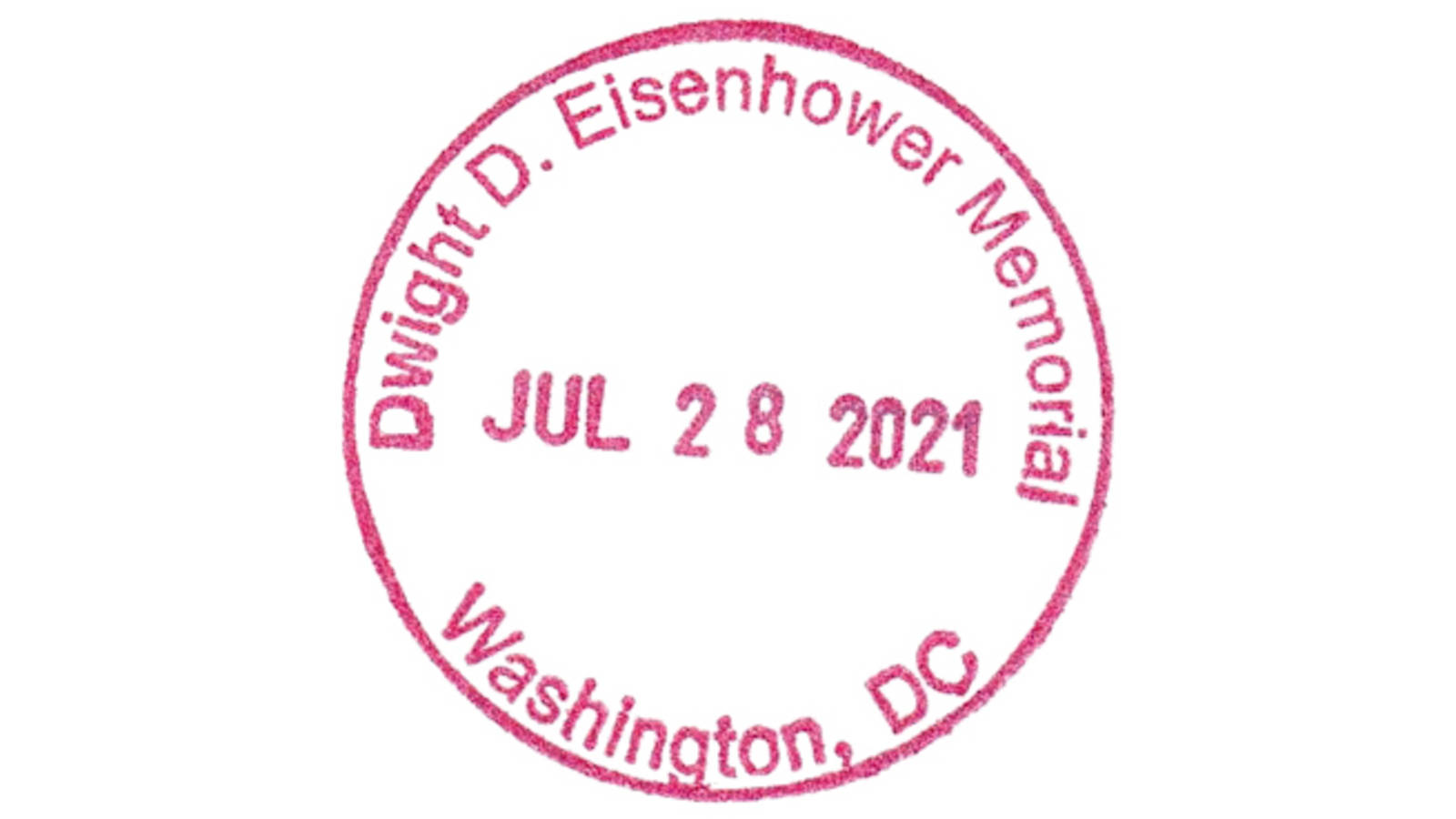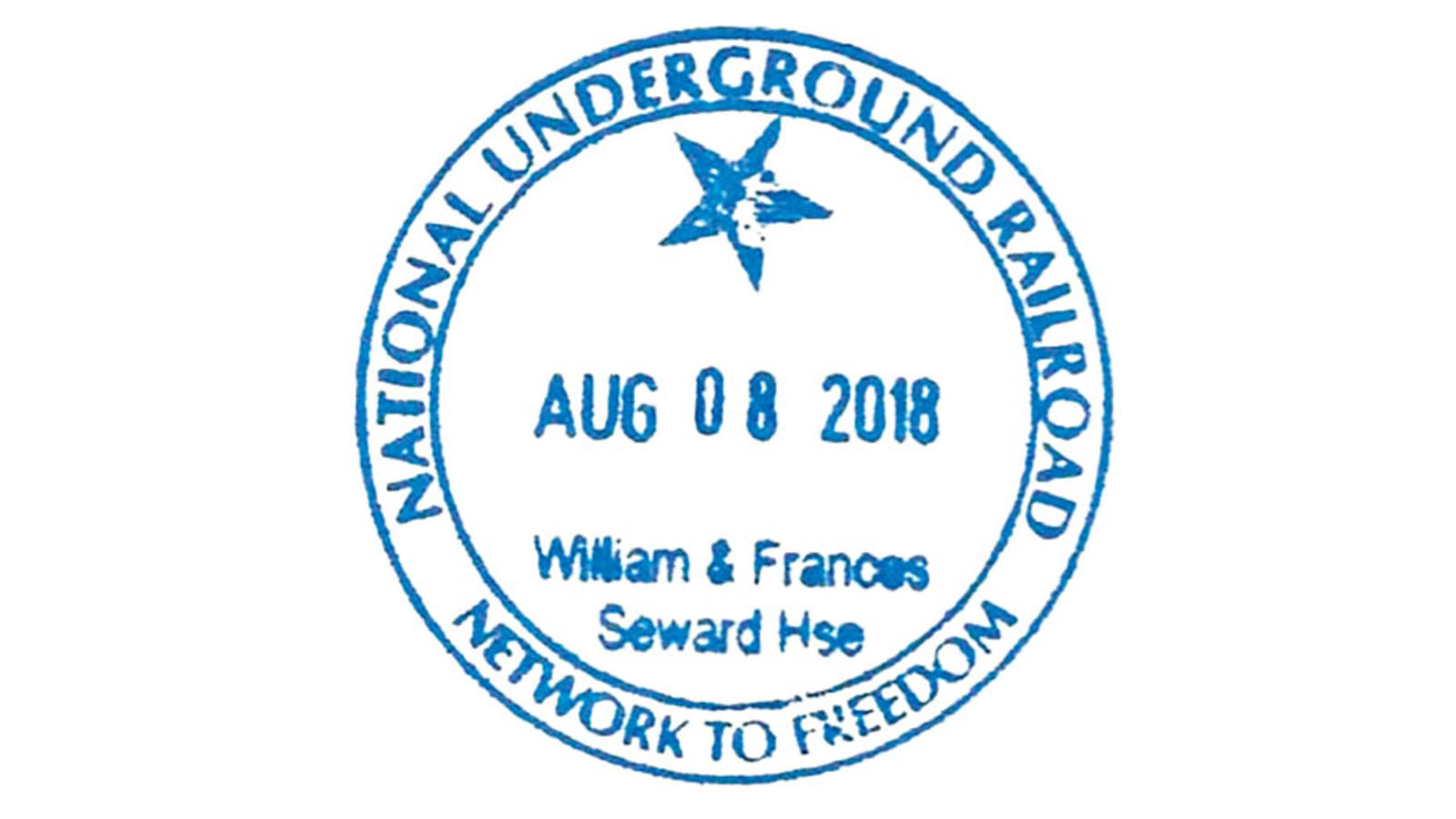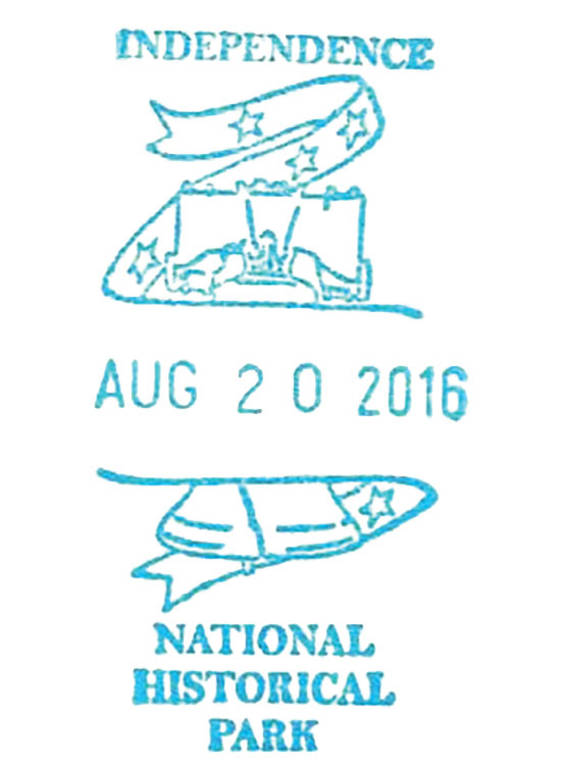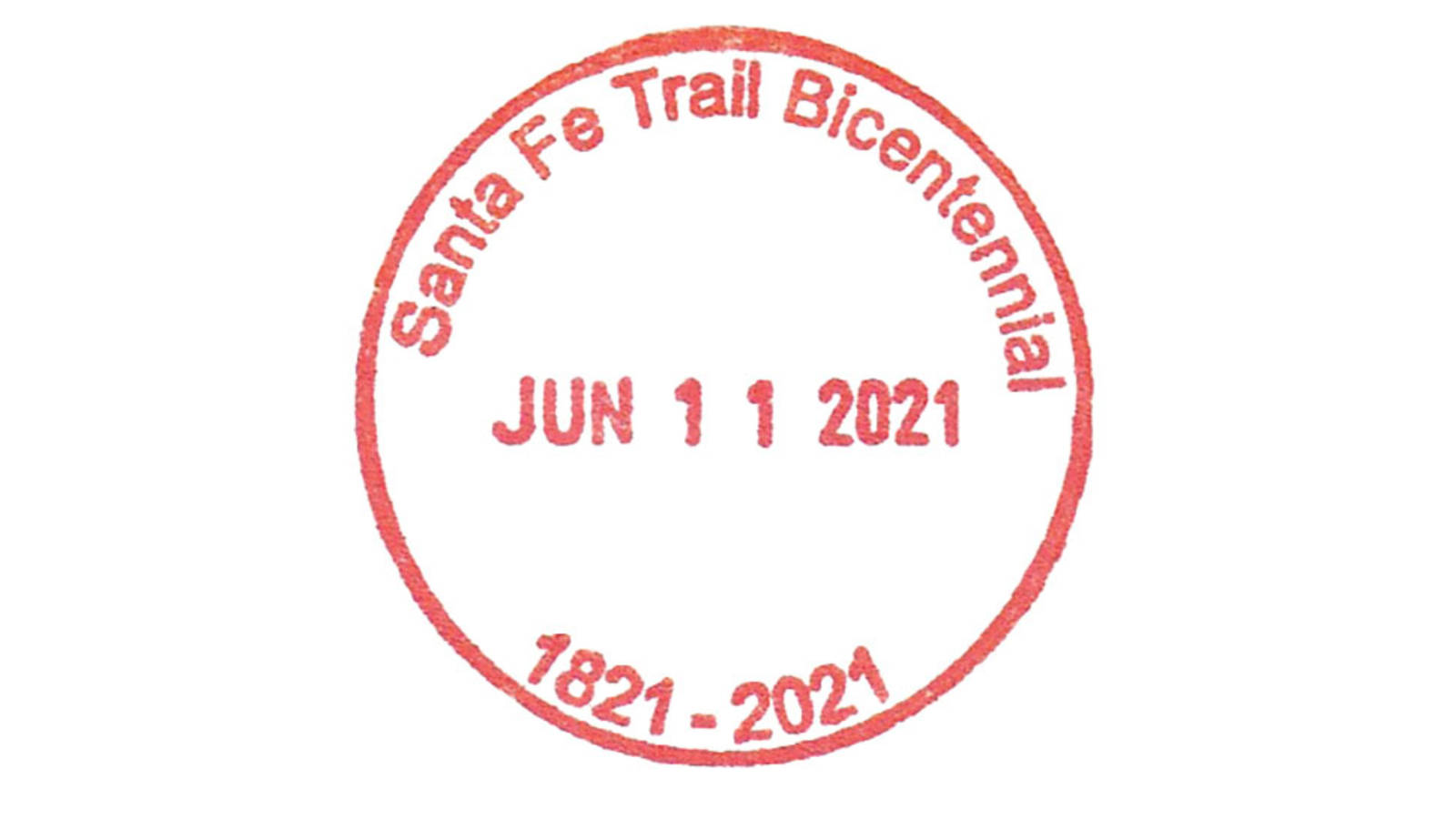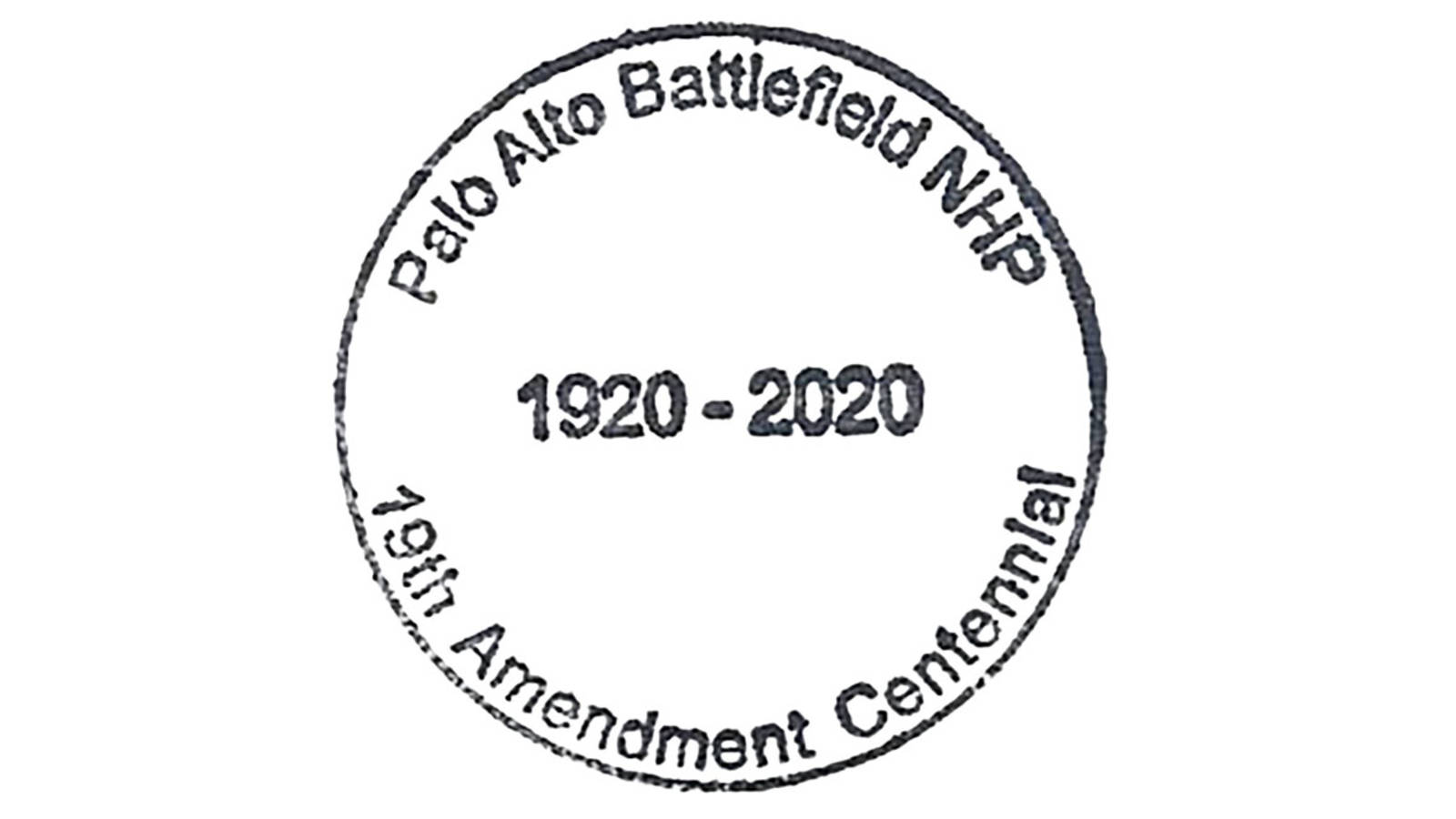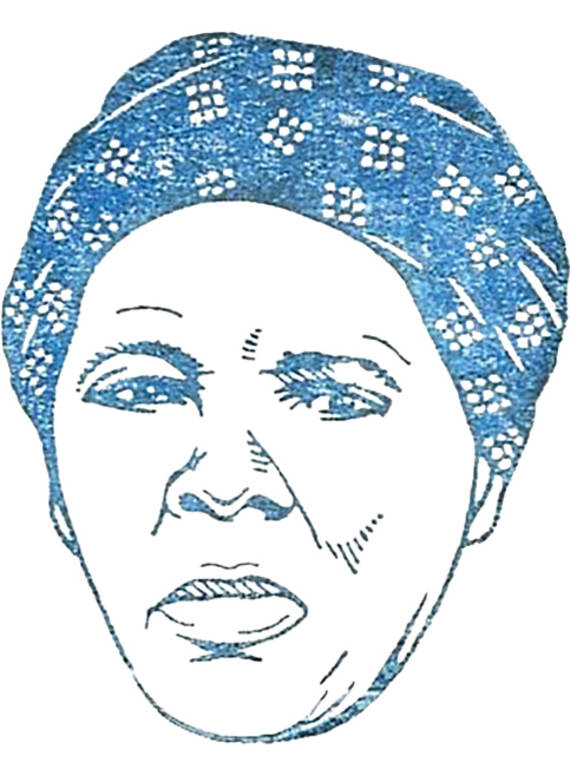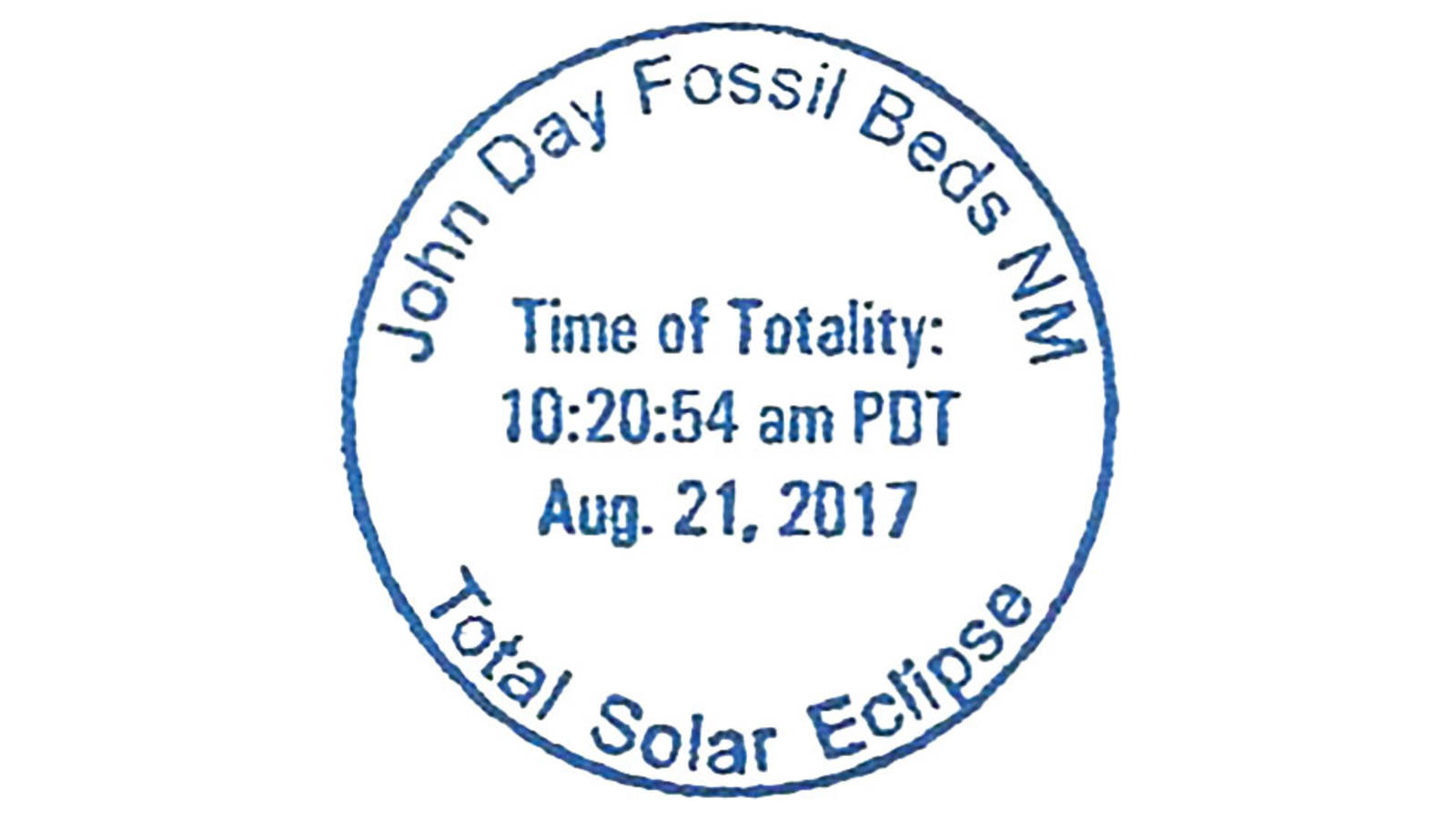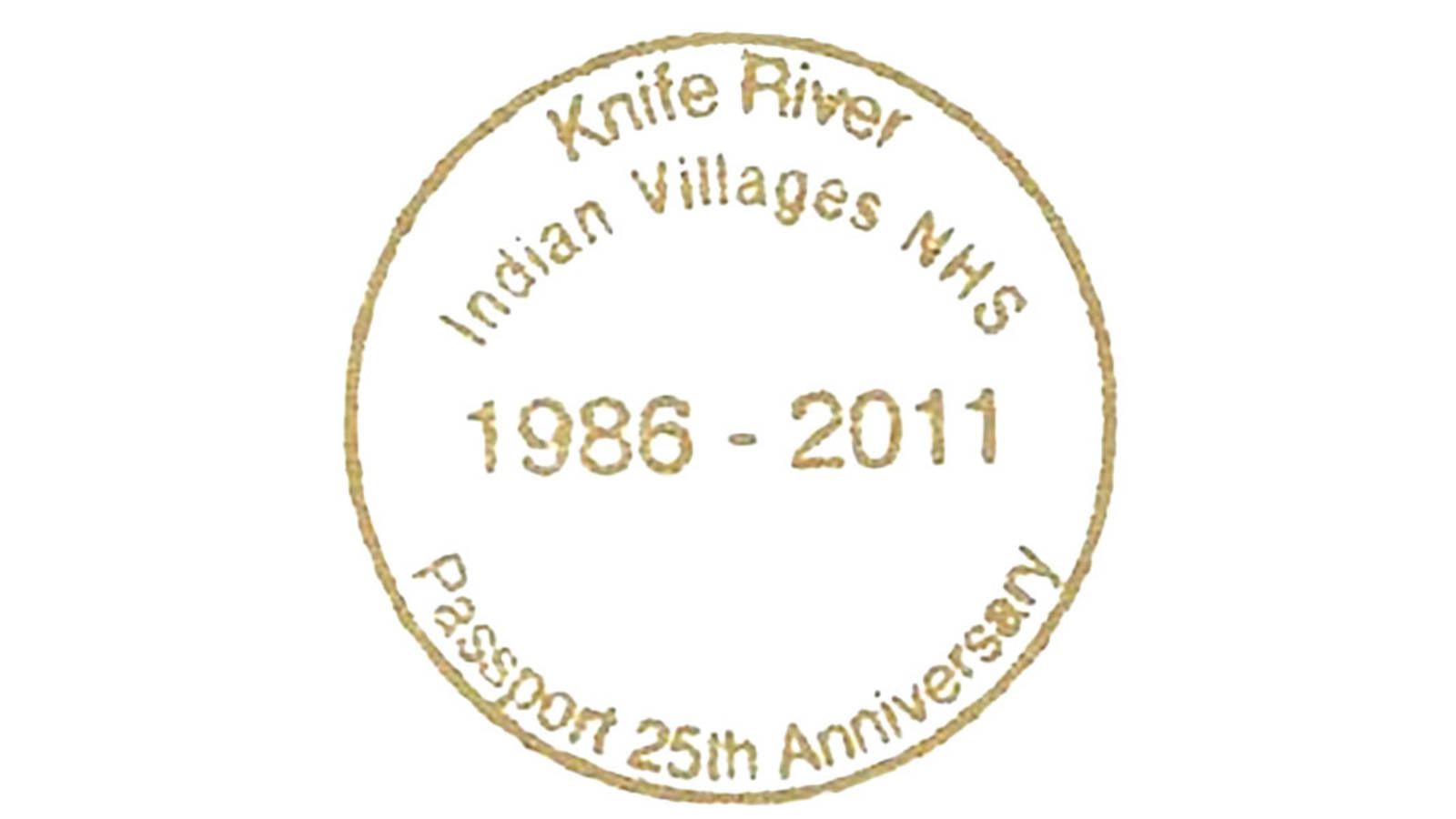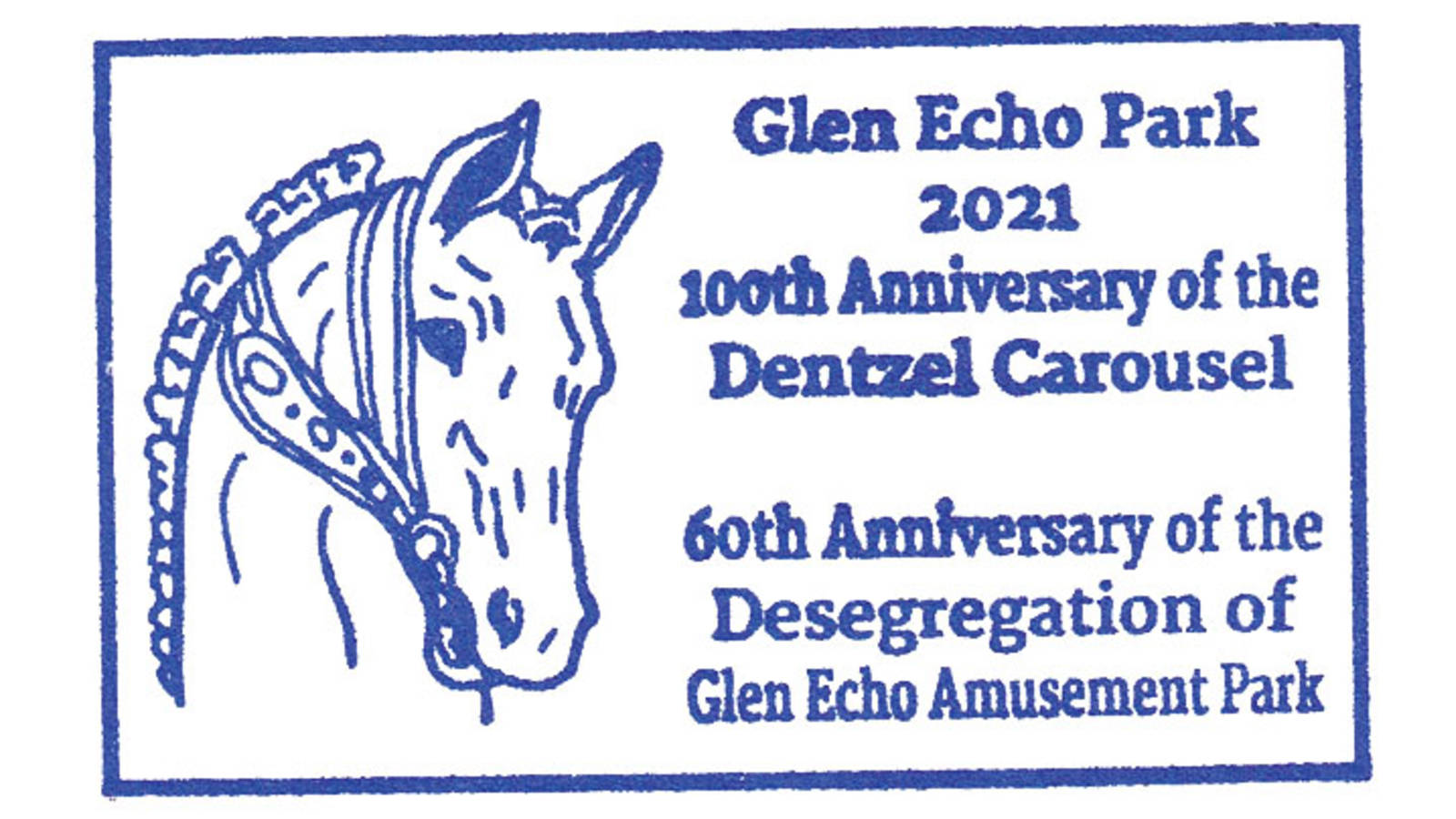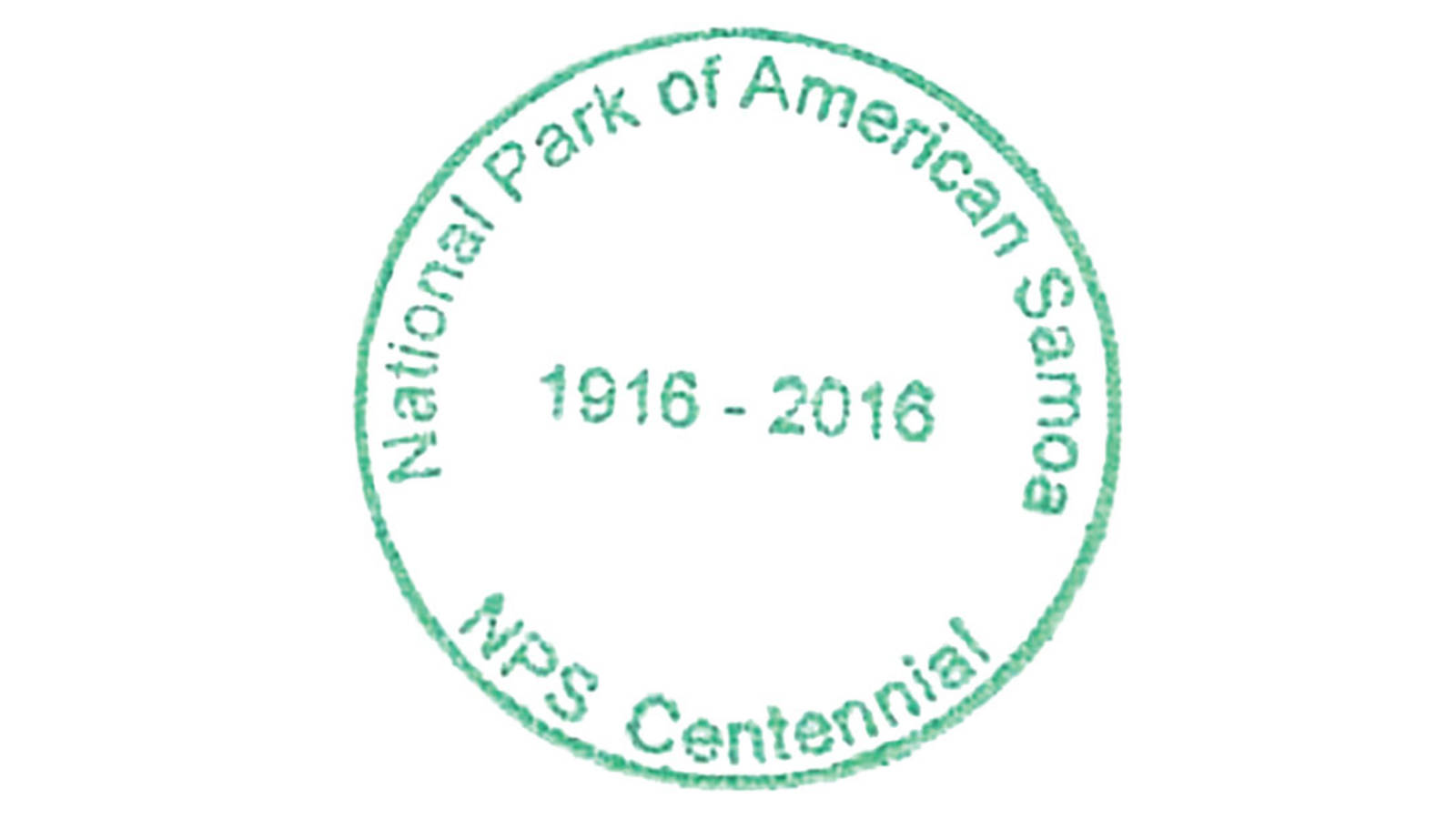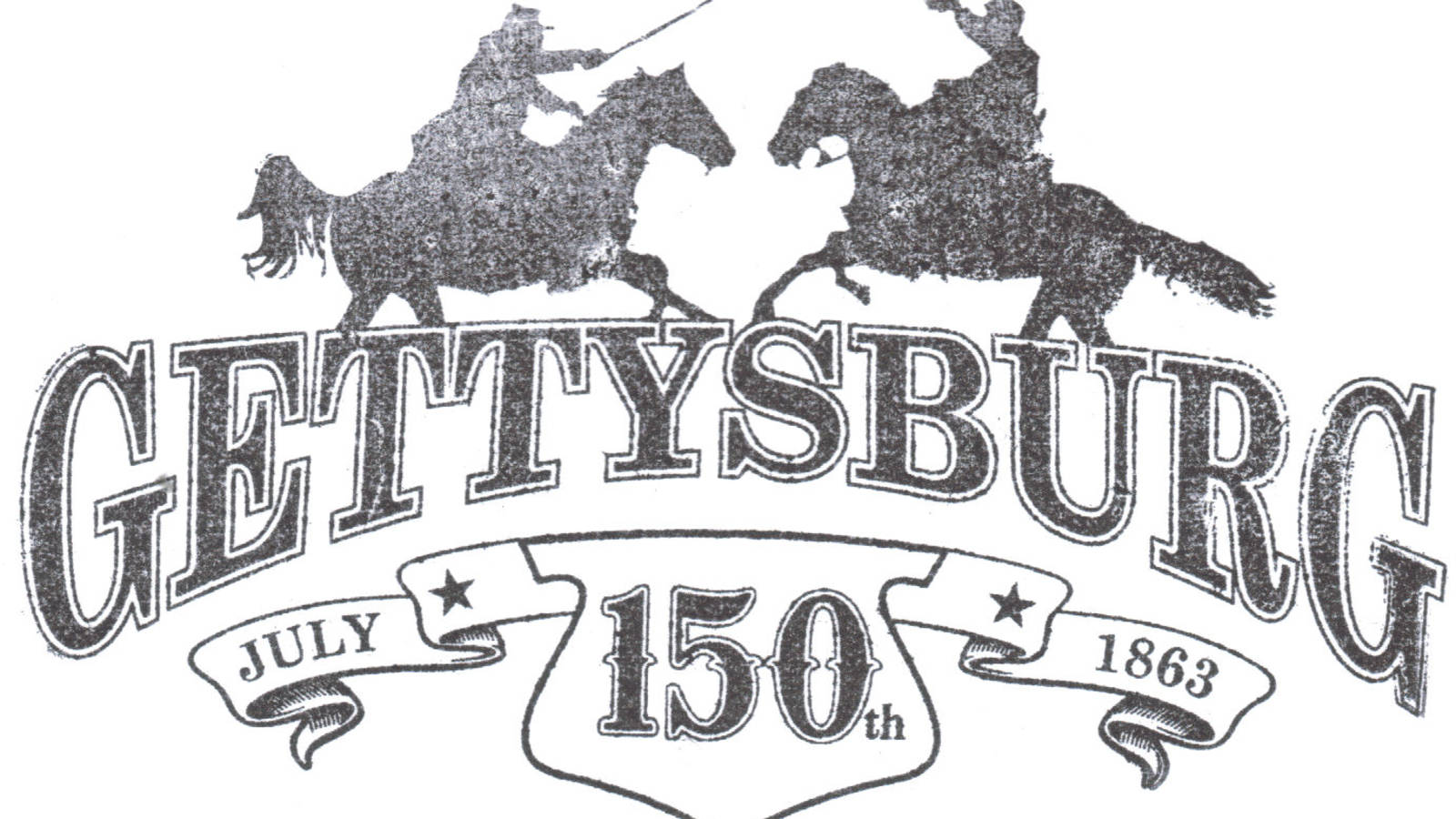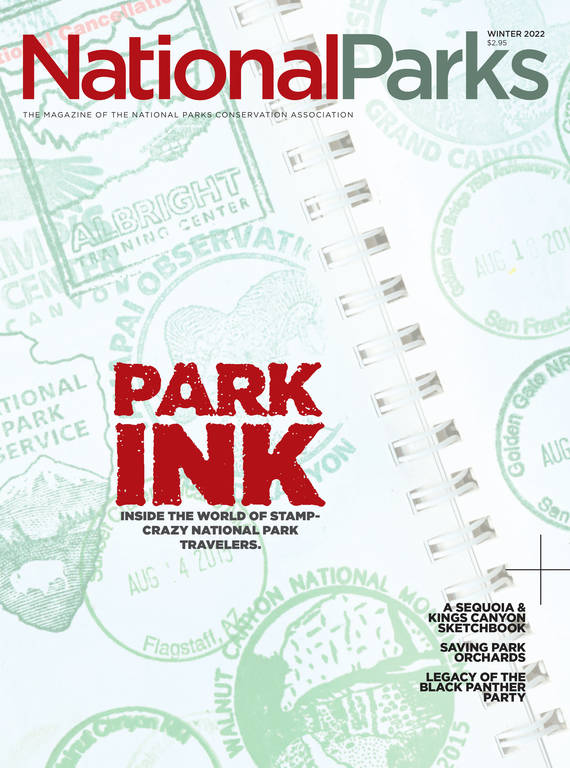Winter 2022
Park Ink
This niche community is obsessed with national parks, and these folks have the stamps to prove it.
Jennifer Baxter looked like a woman with something to celebrate. Resplendent in a madcap sort of way, she wore knee-high, star-spangled socks, a hat festooned with hundreds of sparkling rhinestones and a custom gray T-shirt, designed by her daughter, that posed the question, “Where in the World is Oma?”
On this hazy summer afternoon, Oma was at the counter of the Dwight D. Eisenhower Memorial gift shop in the heart of Washington, D.C., mere moments away from the culmination of a life’s dream.
In the cool quiet of the shop, Baxter merrily surveyed the park’s available stamps: one for Eisenhower (a recent addition to the park system), another for the National Cherry Blossom Festival and others for nearby sites, such as Belmont-Paul Women’s Equality National Monument. The 75-year-old former middle school math teacher thunked down each one with precision, pausing only when she lifted the stamp for Eisenhower. Then with a practiced stroke, she pressed that one down, too.
And just like that, Baxter joined the ranks of people who have visited — and gotten stamps from — all 423 national park sites. That impressive number winked from her glittery hat as she made a victory lap through the store with the aid of her wheeled walker and then exited to join her daughter and two teenage grandchildren, who had driven from Pennsylvania for the occasion. In their matching shirts, the foursome was hard to miss.
“If I could do a cartwheel, I’d do one,” Baxter said.
Jennifer Baxter celebrates visiting her 423rd park (and securing the associated stamps) with her 15-year-old grandson, Cameron Emerson, at the Dwight D. Eisenhower Memorial in Washington, D.C. Over the years, Baxter has taken Cameron and his sister Rachel on many of her park adventures.
©REBECCA DROBISThe zealous stamping community, which Baxter claims as her own, owes its existence to the 1986 creation of the Passport To Your National Parks program. At that time, Eastern National, a nonprofit that operates park stores, produces publications and runs park programs, created the original passport book — or “Old Bluey,” as Baxter affectionately refers to it — and proceeded to crank out a series of stamps. The idea was to give enthusiastic visitors an official way to catalog their journeys through the park system, and it soon caught on. As of this summer, Eastern National had sold 3.5 million passports.
Over time, the number of circulating stamps, otherwise known as cancellations, has ballooned to nearly 8,000. Not only does each park unit offer at least one (and often several), but there are now stamps for other sites, too, such as national heritage areas and wildlife refuges, plus a mind-boggling array of commemorative stamps. Most have a pleasingly minimalist appearance: the site name curling along the top, the city and state mirrored along the bottom and the date smack across the middle. Others feature designs that run the gamut from elaborate (a team of sled dogs for the Iditarod National Historic Trail) to spare (Abe Lincoln’s top hat at the former president’s museum). Baxter calls the more intricate kind “cartoon” stamps. “They jazz up my book,” she said.
If you’re after all of them — or just one in particular — you have to know where to look. That’s where the National Park Travelers Club comes in. Founded in 2004, the club has a dual purpose: to foster a community of park travelers and provide resources for those who covet park stamps. In most cases, the two groups are one and the same.
The club’s website allows users to track their park visits, tally stamps, contribute to message boards, and customize trips via a hyper-detailed Google Earth map and route planner. But it’s the members-only master database that makes the club a mecca for stamping aficionados. Members post dated images of stamps they’ve secured and meticulous notes about their locations, which aren’t always easy to find. One club member, Karen Messa, recounted a trip to Arlington National Cemetery where she’d been on the hunt for a 19th Amendment stamp and had to convince the ranger on duty that he was in possession of it. She told him a club member had gotten that very cancellation a short while before, so she was sure it was somewhere. “He pulls out a drawer,” she said, “and it looks worse than any junk drawer — and pulls out two. ‘You mean these?’ he asked.”
Though the spirit amongst members is more collaborative than cutthroat, with people generously exchanging their stamping and park knowledge, the club does offer lifetime achievement awards based on the number of parks folks have visited. The tiered system, bookmarked by bronze on one end and platinum on the other, recognizes those who have bagged 100 parks or more and is entirely based on the honor system, said Craig Bailey, club secretary and one of the founders. Once members have circumnavigated the entire park system and attained the platinum level, their status will never change, even if new parks are added.
Today, the club boasts over 2,600 dues-paying members, hailing from New England, the Deep South, the Pacific and the great heartland between. They travel with their partners, children, friends, other club members or solo. Most saw a passport book in a park — whether 25 years ago or this past summer — and got curious; they learned a little and started digging for more. “In my quest to find the stamps,” said D.C. resident and club President Yvonne Manske, “I found the club.”
Each year, the volunteer-run club organizes a convention in a different region of the country. This year’s convention, which took place in the nation’s capital, attracted nearly 300 members and spanned five days. Aside from the requisite club business, the agenda included raucous happy hours, dusky National Mall tours, marathon bus rides, multiple ranger programs, countless Junior Ranger ceremonies, two cannon firings and a few steamy nature walks.
Though a trip to the Eisenhower memorial wasn’t on the official slate of activities, word of a pre-convention meetup spread rapidly, and roughly 100 members, including Baxter, braved the July heat to get a stamp from the newly christened park. The gift shop staff had been forewarned about the gathering and were prepared with an extra park stamp: “We brought out a second copy because of the swarming masses,” said the woman behind the desk.
Despite the occasional wail of sirens and the construction crane looming across the street, the atmosphere at the pocket park had the slightly frenetic feel of the first day of summer camp. It had been two years since the club’s last gathering, owing to the pandemic, and the attendees were giddy.
Baxter wasn’t the only club member to complete her park circuit that day. Mike and Cheryl Carver of Lewisville, Texas, arrived in matching green shirts (emblazoned with the ramblers’ motto — “Not all who wander are lost”) to get their final stamp and clinch the coveted platinum level honor. The couple attribute their initial interest in the club and the parks to Ken Burns’ 2009 documentary, “The National Parks: America’s Best Idea.”
After watching the series, retirement became far less daunting to contemplate. “If you just sit around on a porch and watch the world go by,” Mike said, “you get fat and die.” So, in 2012, they left Xerox after a combined 65 years of service, bought a 40-foot, fifth-wheel RV and spent five years driving from national monument to national memorial to national lakeshore. They’d visited parks in the past but decided to start from scratch and obtain passport stamps at each. Their first stop was four hours from home at Lyndon B. Johnson National Historical Park.
They secured the familiar half dollar-sized circle of ink at their penultimate park in May, having picked off 14 sites in a mad dash. With platinum within reach, they could only hope that Congress or the president wouldn’t designate any new national parks before they finished. “The last two months,” Mike said, “I woke up and had the fear: What did they add?”
Not everyone strives for platinum. The club has a laissez-faire philosophy, and members can be as intense or as leisurely in their approach to park visiting as their time, interest and finances permit. Some, such as Thomas Turner, a pipeline engineer from Texas, happily set their sights on a more manageable — though still impressive — 350 or 375 parks.
In the grassy expanse of Fort Washington Park during the first full day of the convention, Turner reflected on his four years in the club, the master database and his motivation. “I’m still trying to find my favorite park,” he said. “That’s why I keep going.” Even so, Turner draws the line at traveling to Guam, a nearly eight-hour flight past Honolulu. “I’ll just stop at Hawaii,” he said. Heeding the siren call of lunch, he rejoined his convention group, which was on an all-day bus tour to five area sites, including Oxon Cove and Glen Echo parks.
As for the stamps, a few club members take them as they come (naturally, in the course of planned travel), while others pursue absolutely every stamp affiliated with national parks, tracking down the sesquicentennial one at Antietam National Battlefield in Maryland, the “I hiked the falls” one at Whiskeytown National Recreation Area in California and the 16 stamps signifying a park’s position in the path of the 2017 total solar eclipse. Messa and her husband went so far as to drive 600 miles from their home in Gulfport, Mississippi, to Great Smoky Mountains National Park to experience the astronomical event — and get the stamp — arriving at the park before dawn.
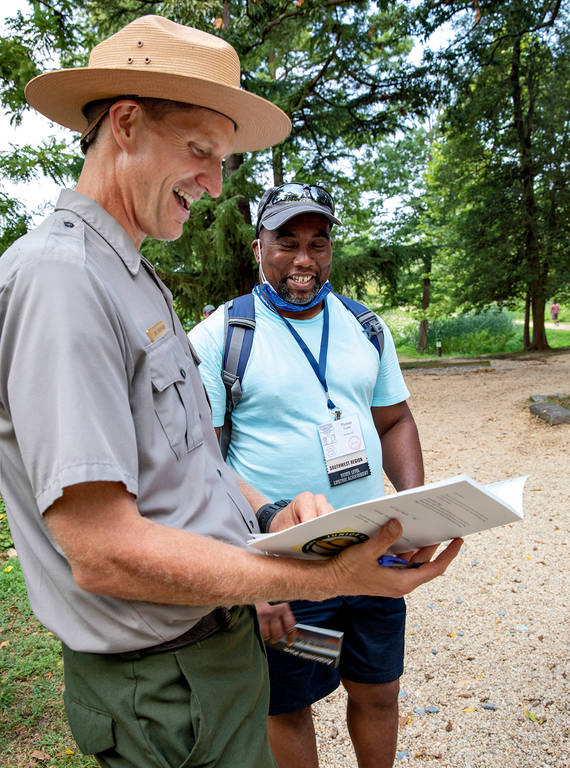
A ranger at Kenilworth Park and Aquatic Gardens in Washington, D.C., inspects Thomas Turner’s Junior Ranger booklet. Many adult club members are ardent fans of the Junior Ranger program, which they say is a great way to learn about a park.
© REBECCA DROBIS“You don’t just do one,” said Messa, who started stamping in 1991. When you go to a park, she counseled a novice club member as they waited to get stamps at the stately home of Frederick Douglass in Washington. “You ask what they have in the back or behind the counter.”
Bailey, the club secretary, said some stampers feel a compulsion to procure cancellations whose spelling or punctuation differs from one rubber iteration to the next. Sitting on a bus en route to Oxon Cove Park later that day, the school business manager and track-meet timer from Colorado shared how, occasionally, a park that once had “National Memorial” on its stamp might come out with a version that’s been abbreviated to “National Mem” or even “NM.” And all at once, a frisson of excitement ripples through the club. Even a minuscule change is sufficient cause for some to return to that park, passport page at the ready.
This appetite for ferreting out the rare as well as the common means many stampers have graduated from the thin blue passport of old to the explorer edition, which is a hefty, expandable tome that zips up and starts with nearly 200 sheets of removable pages. Even that isn’t enough for some, whose booty must be divided into volumes by region.
While all you need to start stamping is a piece of paper, the most avid stampers treat the hobby as a perfectible art form. They worry about precisely capturing every element of a stamp (not dropping a flipper on a manatee at Everglades National Park, say, or suffering a smudge) and consult with friends about the exact brand and color of ink used by the Park Service (so that in the dire instance they encounter a dry ink pad, they’ll be ready with their personal stash).
Gerry Whitson, for his part, isn’t a purist. “A stamp’s a stamp,” he said, adding with a chuckle, “They’re too serious for me.” With his air of bonhomie and stubbly beard, Whitson has a hint of Santa Claus about him — if Santa lived in Kentucky, owned a Tesla and rode a motorcycle rather than a sleigh. He embarked on his second act after 25 years as technology manager for UPS Airlines and “fell into the club” when the Iron Butt Association, a motorcycle group he belongs to, promoted a tour of the national parks in 2018.
We’re really nice, but we’re really weird.
As of the 2021 convention he’d visited 395 parks (putting him five shy of the titanium level) and probably would have completed the 423-park circuit the previous year had the pandemic not kept him from the Alaska sites. Not one to while away the day, Whitson travels four or more months a year and credits his speedy progression through the club’s tiers to his nature: “I’m a goal-oriented person,” he said.
Amra Peterson, known by her club handle Parkie McParkface, summed up the stamping community this way: “We’re really nice, but we’re really weird.” She and longtime friend Melissa Kelly were “anti-campers and anti-hikers” until about 10 years ago when they discovered the beauty of national parks, Peterson said. Now the Salt Lake City natives — both in their early 40s — coordinate their outfits, often customizing at least one of the elements, for the convention every year. This year, while seated at a picnic bench overlooking the dinner plate-sized lotus blossoms of Kenilworth Park and Aquatic Gardens, they wore denim jackets (Kelly’s blue, Peterson’s white) embellished with dozens of stitched-on park patches. Kelly, who calls stamping addictive, said that when they go to a convention, they tell their friends, “We’re going to be with our people.”
That circle of like-minded people got a little larger this summer with the addition of 18-year-old Akku Kumar. “No one I know likes them the way I do,” the Texas A&M freshman said of his newfound interest in parks. Kumar, who is working on his pilot’s license and harbors a dream of one day making it to space, said that he got into stamping in June when he and his girlfriend, Erin Wagner, visited Assateague Island National Seashore along the Eastern Shore. Kumar met a man in the park who had a passport book and maybe 200 stamps, and it triggered his competitive side. He immediately thought, “I can beat that guy.” Within a month, Kumar had tallied more than 40 parks, joined the National Park Travelers Club and driven his lime green Honda Civic from Pennsylvania to D.C. for his first convention. (Later in the summer, his grand total would leap up to 165 national parks.)
ABOUT THE PHOTOGRAPHER
Wagner is supportive of Kumar’s hobby — to a point. When they traveled to join her family for vacation, she said, Kumar mapped out a tortuous route that involved squeezing in as many parks as possible. “Sometimes he would get on my nerves,” Wagner said. “It’s important to get a lunch break.”
On the plus side, Wagner readily acknowledges that Kumar’s passion has introduced her to many hidden gems. For example, the story of Maggie L. Walker, the first Black woman to found a bank, was unknown to her, Wagner said, before Kumar added that Virginia national historic site to his list.
This, say club members, is one of the best things about stamping.
“Every park has a story,” said Baxter, “and the stamps are a good way to get you to places that you might have possibly overlooked.”
Back at Eisenhower on her big day, Baxter glowed as she received hugs, high-fives and attagirls from her friends and fielded requests for photos. “She’s like our celebrity. Can you tell?” asked Sharon Aubuchon, a stamper since 2012.

National Parks
You can read this and other stories about history, nature, culture, art, conservation, travel, science and more in National Parks magazine. Your tax-deductible membership donation of $25 or more entitles…
See more ›While her fellow club members huddled in the slivers of shade afforded by the memorial’s stone columns and friezes, Baxter rattled off a few of the lesser-known sites that surprised her — Arkansas Post National Memorial, Thomas Stone and Mary McLeod Bethune Council House national historic sites — and reminisced about passionate rangers, helpful visitors and eye-opening museums. “I talked to a Freedom Rider,” she said. “Come on! How many people can say that?!”
Running through the timeline of her life, as demarcated by park adventures, Baxter explained that she took her first park trip when she was 4, but that 45 more years passed before she discovered the passport program while on vacation with her sister along the Outer Banks of North Carolina. In the visitor center of Wright Brothers National Memorial on a spit of land between the Atlantic Ocean and the Albemarle Sound, she happened upon Old Bluey and nabbed her inaugural stamp. It’s only in the last 10 years that her part-time hobby took on a life of its own. “I realized I was running out of time, so to speak,” she said. “I really sped up. I retired. I saved some money, which I’ve spent every dime of, but it was so worth it.”
Baxter smiled and looked around. “It’s taken me 70 years to complete my journey,” she said. “It’s just been a wonderful lifetime experience.”
About the author
-
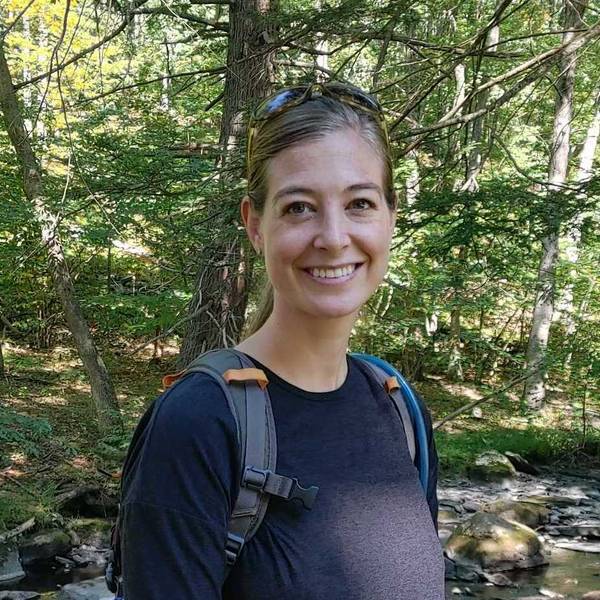 Katherine DeGroff Associate and Online Editor
Katherine DeGroff Associate and Online EditorKatherine is the associate editor of National Parks magazine. Before joining NPCA, Katherine monitored easements at land trusts in Virginia and New Mexico, encouraged bear-aware behavior at Grand Teton National Park, and served as a naturalist for a small environmental education organization in the heart of the Colorado Rockies.
